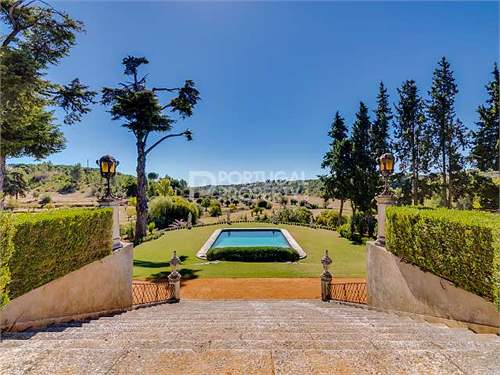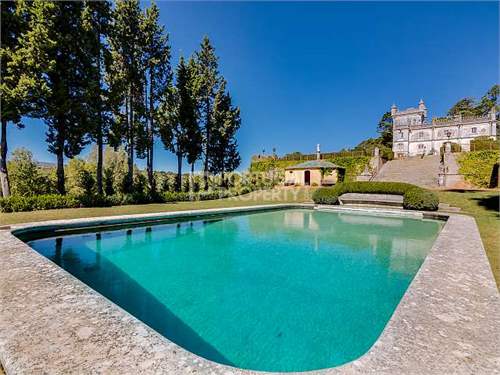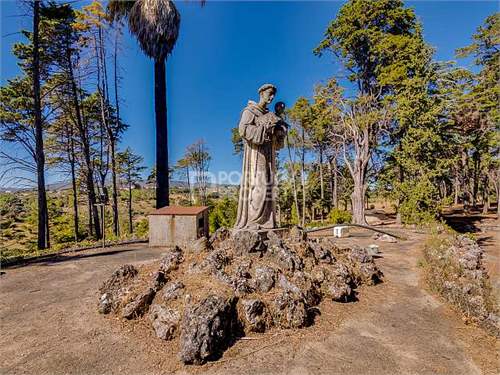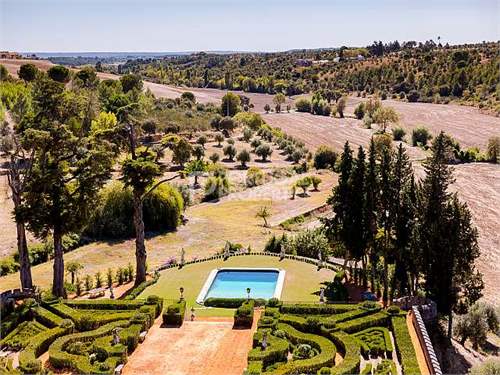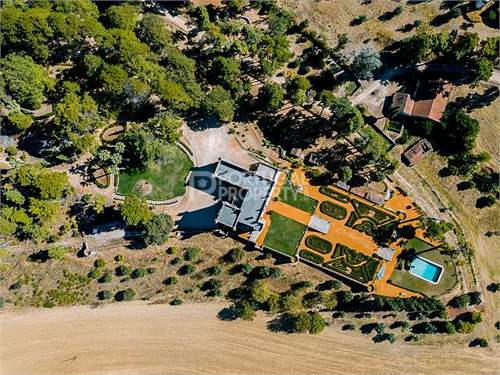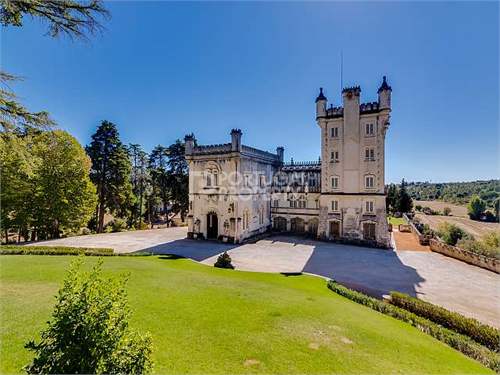
House for sale
£5,252,280
Lisbon, Lisbon City, Portugal Property ID: 39342985
Property description
Its geographical framework
Quinta da Torre de Santo António das Gateiras, today is known as Quinta da Torre de Santo António, or how its better known today, Quinta do Marquês, is located in the municipality of Torres Novas, Santarém district. Located in an ancient settlement area, as evidenced by the various archaeological remains found or the abundant Arab origin toponymy, it was conquered and reconquered, having obtained a charter in 1190 by King D. Sancho I. The area, which would have been an important point of supply for the royal stables and inns for the travellers that passed by, was occupied mainly by olive groves and cereals production. These characteristics and the fact of its proximity to Lisbon will have privileged the appearance of some estates, which, belonging to a closely related elite, will have contributed to the socio-demographic development of the region. Having almost always been tied to royalty – by possession, dowry, or donation – Torres Novas maintained a relationship with some social figures, thus attracting owners of an elite that, from the second half of the nineteenth century, provided some economic progress, boosted by the construction of new communication routes and based on some industrialization and agriculture, which mechanization will arise at this point in time. The Municipality is, therefore, a very attractive investment for wealthy families, an educated and knowledgeable social class, who are not afraid to dare in architecture and decoration, hiring several artists who will leave their brand for many years.
The Estate and its history
Quinta da Torre de Santo António das Gateiras, initially so-called as it is situated in the town of Gateiras, named after the abundance of wild cats in that area, was founded in the late seventeenth century.
Situated on a plateau in the countryside, the building stands alone on the hillside as an imposing architectural example, witnessing the various interventions it has undergone over the years and which have made it into the building that has reached our days, full of art history, as well as the marks left by its residents over the years. The construction of the first building in the same place dates, therefore, from the seventeenth century, commissioned by its first Morgado (1), the notorious legal consultant Manuel de Azevedo Pais. After ownership, including the plot of land, has passed through the hands of various owners, successive family inheritances and various transformations, which are not precisely documented, however, the building which had adopted the style of a chalet, with a built-in chapel, was sold to Alfredo Antas Lopes de Macedo was sold in 1876, a military man of great career, who in turn sold it in 1880 to the then Count of Foz, Tristan Guedes of Queiroz Correia Castelo Branco, who later became the first Marquis of Foz.
The first Marquis of Foz
The greater human intervention in the estate is due to the Marquis of Foz, an educated Portuguese who combined good taste and the knowledge of the best of what was produced in Europe in fine and decorative Arts, conferring to the then denominated Quinta de Santo António das Gateiras, an architectural and landscape wealth, unique in the Municipality of Torres Novas. The Marquis of Foz, who at the time was one of the country’s leading and wealthiest businessmen, also with a relevant presence abroad, had already been guiding, with some of the most qualified Portuguese artists, the remodelling and completion of Castelo Melhor Palace in Lisbon, acquired in 1889, later known as Palacio Foz and where he went to reside, where he assembled a remarkable collection of works of art which for years was considered one of the best national art collections. The first Marquis of Foz bought the Palace that gave the name to the 6th Marquise of Castelo Melhor, D. Helena, following the transactions of land and real estate for the construction of the railroad that would finish in Lisbon’s Rossio. The Palá;cio Foz, in Praca dos Restauradores, was, at the time and until the end of the 19th century, the most remarkable residence in downtown Lisbon, having undergone major renovations. After the acquisition by the Marquis, the Palace was again the object of internal and external renovation, continuing to be one of the most luxurious residences in the city, a magnificent cultural centre and one of the favourite places for the Lisbon elite to meet, at various parties and celebrations. However, soon after, in the twentieth century, the precarious financial condition of the Marquis of Foz, seriously affected by the crisis of 1891, forced him to discard his assets, calling an auction that lasted for ten painful days, inducing a constant coming and going of curious people and buyers, domestic and foreign, who went to the place to see or acquire some of the goods up for auction. The Marquis had accumulated in the palace an impressive collection of art with great commercial value, a collection that he was selling, along with the rest of the Palace, to pay off his debts. It is also attributed to him the well-known phrase “;I am not a man without possessions, I am a man without credit”;, that shows the disadvantaged situation in which he was. His name had ceased to be synonymous with large capital and large investments.
However, it is to Quinta de Santo António das Gateiras that, from 1901, he will devote all his attention and care, both in the construction of the new chapel, in the rebuilding of the house and in the creation of the wooded park, as well as in the modernization and operation of the rural part. His keen interest in the region had already been born years ago when, following the purchase of Quinta de Santo António das Gateiras, then used for short family stays, he acquired other neighbouring properties, dedicated to the most varied types of agricultural and wine production. And it will be in that farm where he will spend more time with his family and which will be his residence from the year of 1907, being this decision essentially due to the bankruptcy of his business activity, severely affected by the crisis of 1891 which made his public life in Lisbon very uncomfortable. The manor will thus become a “;haven of tranquillity”; for the Marquis also clearly depressed by the loss of his wife. It is known that, although they were not accurately recorded, there had been interventions in the then existing primitive manor, consisting of a chalet with two floors, attics and gable roof, covered balconies and a tower with four floors and four water roofs with attics. But it was during the years 1901 to 1907, under the direction of António Casimiro Simões, a friend of the Marquis of Foz, that the most expressive changes of the urban architecture of the manor were verified, in a complete transformation of the chalet that until then existed, a building almost utopian in character, with an artistic revivalism imprint of neo-Manueline and neo-Gothic, in vogue at the time. In this context, two southern Manueline windows from the 16th century, from the house
























